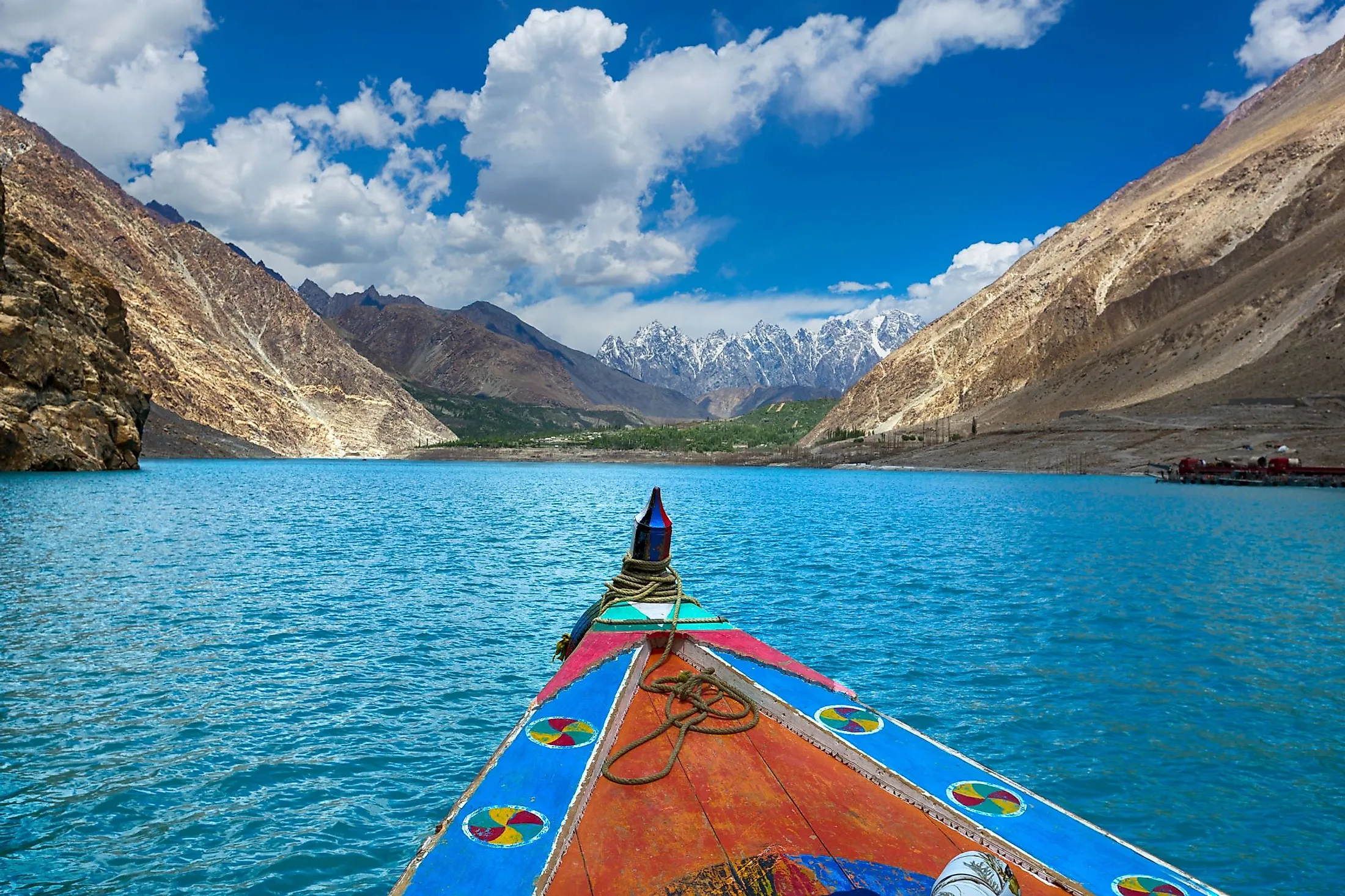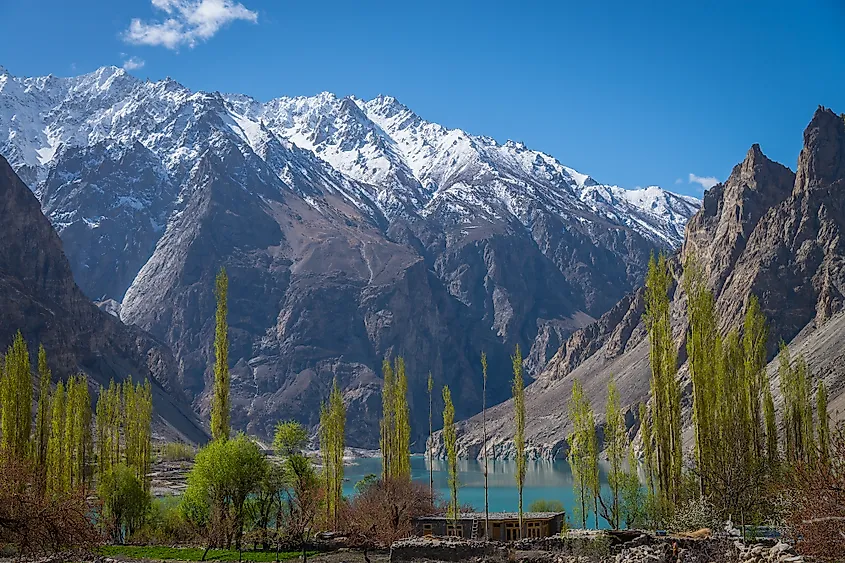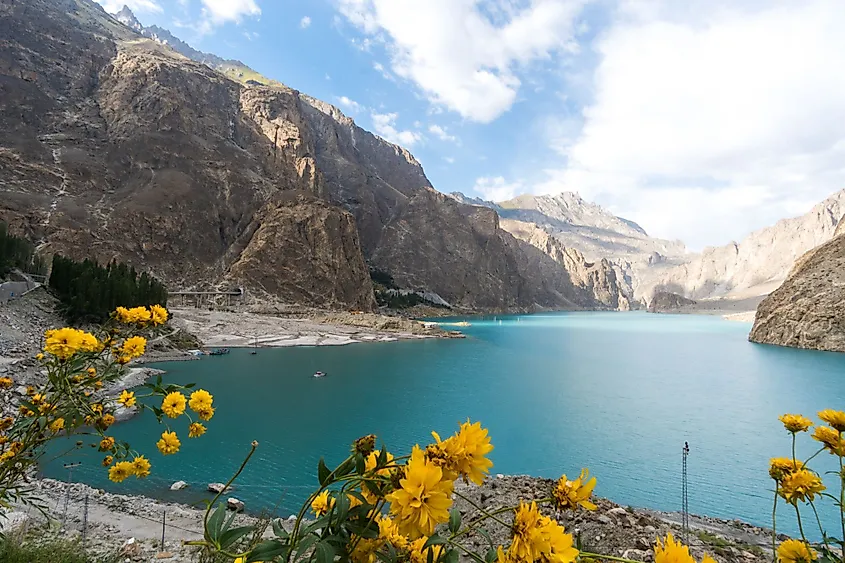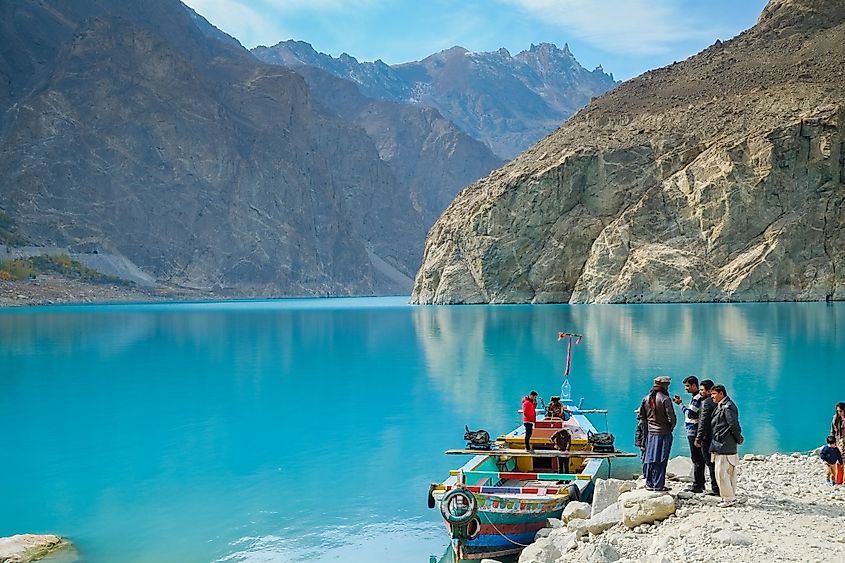
Attabad Lake
Attabad Lake is located in the Hunza Valley, in the province of Gilgit−Baltistan, Pakistan. The lake is roughly 21 kilometers long, and has a depth of more than 100 meters, meaning the total volume is roughly 410,000,000 cubic meters. The lake is also considered juvenile, as it has only been in existence since 2010. Attabad Lake was created in 2010, but it is not a synthetic lake or reservoir. Instead, it is a naturally occurring lake created by chance due to the occurrence of a natural disaster. A river runs through the Hunza Valley, which itself is at the base of the Karakoram Mountain Range. In January of 2010, a landslide hit the range, causing rock and mud to rush down the mountainside. This falling debris had a catastrophic effect on the villages below, burying several towns and reshaping the landscape of the region.
The Disaster

Four villages in the area were completely drowned either in the initial flood, or due to lake overflow, which later spilled over and washed out several other neighbourhoods. These areas experienced extreme flash flooding, completely submerging some towns, and partially submerging others. The most affected regions included Aminabad, Gulkin, Gulmit and Shishkat. Reportedly, 20 people lost their lives, some 6,000 residents lost homes, and more than 25,000 individuals were affected either by displacement or revenue loss. After the initial landslide, bad weather conditions continued to increase the flooding, and cause problems in the rescue and recovery efforts. Along with homes and businesses, various ancient religious relics were also lost in the swelling waters. These included sacred buddist monuments, temples, and mosques. In certain areas, tree tops and the peaks of some of these tall buildings can still be seen poking out above the surface of the lake in some areas.
Lake Formation

The rocks, mud and soil from the landslide formed a natural dam within the Hunza River, blocking its flow and therefore creating a lake in what was previously a free flowing river. Once the stream of water was blocked, the river valley quickly swelled, filling the lake to its maximum capacity and depth. Because of the nature of its creation, the shape of the lake much resembles a river, and it is particularly long and skinny. The river water was in part glacial, so despite the destruction, the resulting lake is stunning in colour and beauty. It’s crystal blue waters provide the perfect compliment to the towering Karakoram mountains which rise up from its banks on either side.
Tourism

Since its creation in 2010, the lake has been a popular tourist attraction for visitors from all over Pakistan and the world. Due partly to the beauty of the deep blue colour of the lake, and the sheer interest value of how it was created, tourists love to see this phenomenal natural creation. Hiking paths are available, as are various water sports such as jet skis and boating tours. Similarly, hotels have cropped up around the lake edge in recent times to help accommodate the influx in visitors.











